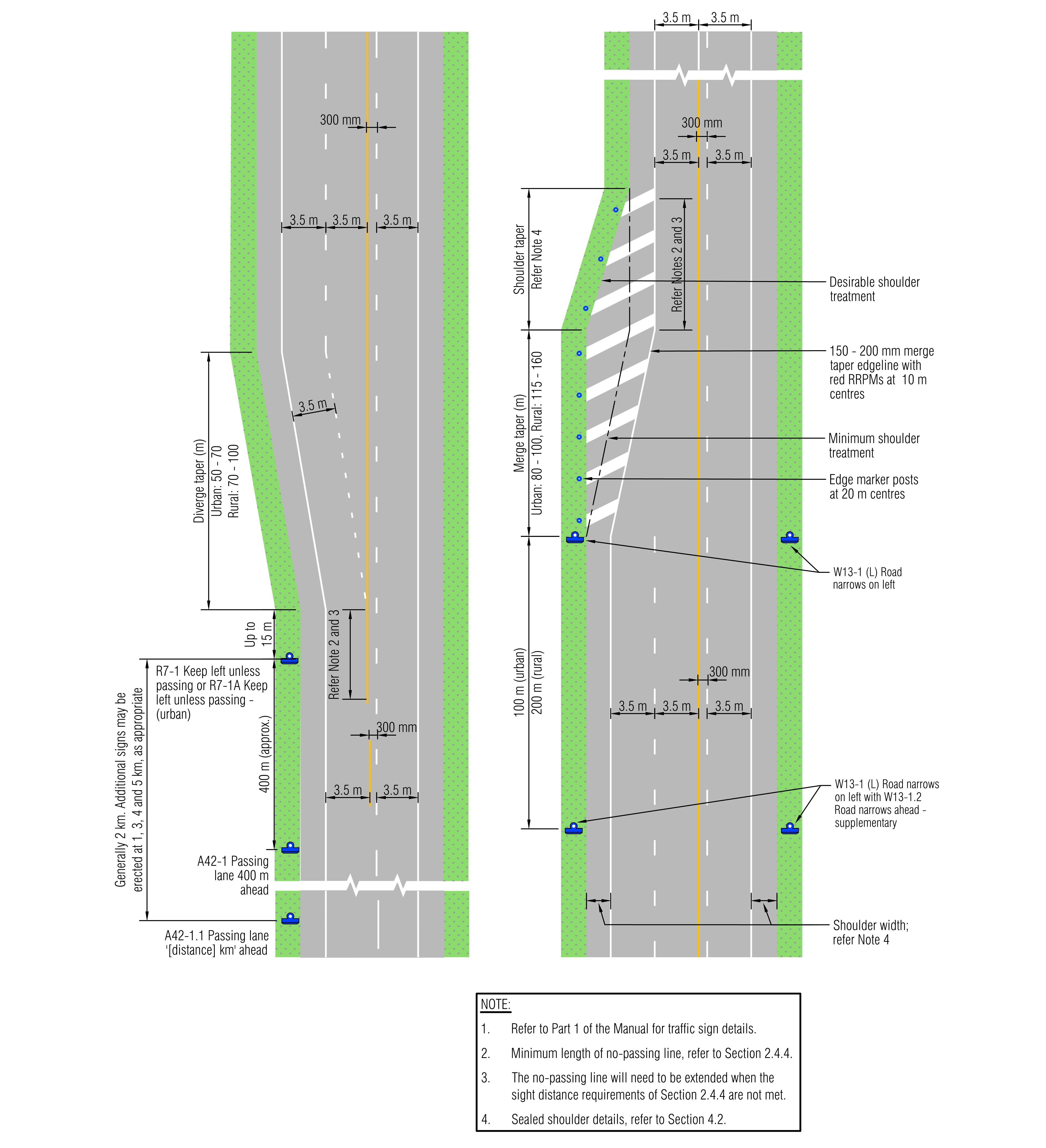Road markings for passing lanes on rural roads are illustrated in Figure 4‑1. They should be marked as specified in the following sections.
Information on no-passing line markings is provided in the no-passing lines sections. Where a passing lane is adjacent to a median barrier, centre-line markings should be as described in the markings section of this manual. Otherwise, for centre-lines or wide centre-lines, a no-passing line should be marked for the direction of travel over the length of passing lanes and may be installed in the oncoming direction.
Treatments in the centre of the road - no-passing lines
Audio tactile profiled roadmarks - no-passing lines
Medians and median islands - markings
Information on edgelines is provided in the edgelines section.
Refer to the audio tactile profiled roadmarkings section for details on ATP markings at passing lanes.
Audio tactile profiled roadmarkings
A sideways movement of approximately 1.0m/s is normally used for diverging movements and approximately 0.6m/s for merging movement. The length of merge and diverge tapers should normally be determined by the following formulae:
Where:
Refer to Austroads guidelines for more information on how diverge and merge tapers may be altered to suit various site situations.
Refer to the lane lines section for details of lane line markings where multiple lanes are provided for the same direction of travel.
A continuity line marking as specified in Table 4‑2 should be used for the diverge area.
Table 4‑2: Specification for continuity lines at passing lane diverge area
| Colour | Reflectorised white |
|---|---|
| Width rural | 200mm |
| Width urban | 150mm |
| Stripe | 1m |
| Gap | 3m |
The diverge line should normally be marked parallel to the diverge edgeline and offset at a minimum of 3.5m from it. Where an approach traffic lane is greater than 3.5m wide, the diverge line should be marked to gradually reduce the traffic lane width over the length of the diverge taper.
The delineation of passing lane merge areas requires special attention. The following treatments, which are shown in Figure 4‑1, are recommended:
Figure 4‑1
The diagonal shoulder hatching should be marked as specified in Table 4‑3.
Table 4‑3: Specifications for shoulder hatching at passing lane merge areas
| Colour | Reflectorised white |
|---|---|
| Width | 2m, measured parallel to the centre-line |
| Stripe slope | 2:1 |
| Spacing | 20m |
Passing lanes in urban areas should be marked in the same manner as passing lanes in rural areas, except that:
Figure 4‑1: Markings for merge and diverge areas at passing lanes
